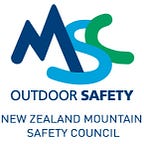Get Outdoors Week | Hide and Seek with MegDrive
Brought to you by MegDrive at megdrive.com
It’s the New Zealand Mountain Safety Council’s Get Outdoors Week from 16th to 24th November 2019. I’m excited to collaborate for #GOWeekNZ and share some tips and tricks for family tramping in New Zealand. Safety is always number one and fun is a close second! When everyone is into it, family tramping can build some special memories… or it can be the thing of legendary tales of childhood misery. Let’s take a closer look at what goes into family tramping.
- Plan the trip. Check.
- Tell someone your plans and what do to if you’re not back as planned. Check.
- Keep an eye on the weather. Check.
- Know your limits. Choose an adventure that matches the group’s fitness and experience. Check.
- Pack sufficient and appropriate supplies. Here’s a checklist for day walks and another for overnight tramps. Check.
- Help the children love tramping as much as you do. ???
There are lots of ways to make your own fun in the bush, but the main thing is to keep it simple. Often games we loved as children are just as beloved by the next generation. You don’t need to get too fancy, you just need to remember what you used to do. For example, Hide and Seek. Kids love finding things and a challenging search can keep everyone entertained. The thrill of the chase can work wonders for keeping kids happily moving on bush walks.
Here are some of the Hide and Seek inspired tramping games that are bound to get you through the toughest kilometres:
- Hidden objects. This version of Hide and Seek involves someone running ahead down the track to hide something. Kids seem to have a natural sprint-rest rhythm to their walking, so this suits most children. The adults with heavier packs may struggle with the sprint part. Not to worry, with steady plodding, you’re bound to catch up with the kids in no time. If you’re rather organised, you can bring things to hide such as a soft toy or treats. For treats, M&Ms work well as the hard shell lasts on the damp ground or you can put treats in a small container. On days where you’re less prepared, you can use a spare item of clothing from your packs and the kids take turn tying them onto trees or you can hide a special rock.
- Hidden humans. The kids take turn running ahead and hide around the bend, waiting until the group catches up before they leap out to scare us. With safety in mind, our family rule is no more than 2 steps off the track and sometimes less depending on the terrain and any pest traps that might be set up in the area.
- Hidden in plain sight. Like I Spy, but with photographic evidence. The kids take turns running ahead with a digital camera or phone and take a photo of the item to be found. Then they trot back to the group, show the photo to all the seekers, and the group continues down the track looking for the item. We find traditional I Spy often slows us down because out in the bush, there are a limited number of colours. It goes like this, I spy with my little eye, something that is green! Uh, that tree? No. That tree? No. That tree? What about that fern? If the item isn’t spotted before we start to walk past it, the kids often want the group to stop until it’s found. With version Photo I Spy, you usually have a better idea of what you’re looking for.
- Geocaching. Geocaching is a sort of international treasure hunt for caches (often small containers) that are hidden at specific GPS points. Geocaching requires your smartphone or GPS unit and a login for a geocaching website. You can check for geocaches that are on a trail you were planning to visit or you might find geocaches in an area you hadn’t heard of before. Before you head out, check the geocache position and difficulty level to ensure the search area is safe for your group.
- Orienteering. In the hierarchy of Hide and Seek difficulty, orienteering is two steps more complicated than Hide and Seek and one step more difficult than geocaching. Orienteering involves using a map and compass to find pre-determined check points (called controls). Orienteering courses come in various levels so beginners can choose an easy course while they are learning to read a topographical map and use a compass to navigate. Families with young children can do it together and it’s good for older children, adults, or anyone wanting an extra challenge. Orienteering usually involves going off track so extra care needs to be taken to ensure safety. To get started, look up your local orienteering club, attend an orienteering event, or visit one of the permanent courses set up all over New Zealand and in Tauranga at the Lakes.
Check out the Day Walk Activity Guide on the New Zealand Mountain Safety Council website, Get Outdoors for #GOWeekNZ and ensure you #MakeItHomeNZ
For more helpful guidance and free resources for planning a family outdoor adventure check out:
1. Plan My Trip; a free online planning tool
2. Get Outdoors Videos; bringing the fun to how-to videos
3. Day Walking eTool; All you need to know in 15 minutes
For more helpful information and resources head to mountainsafety.org.nz or goweek.org.nz, and don’t’ forget to share your Get Outdoors Week adventure to be in to win!
